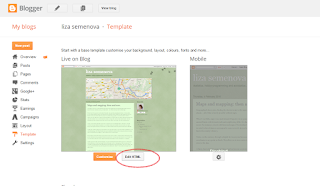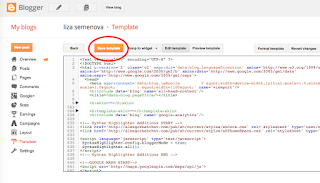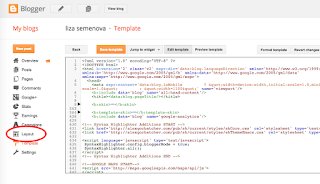Couple of weeks ago Rasmus, the Director of HackZurich, suggested to join him at Zurich Girl Geek Dinner and share my experience at Hack Zurich 2015. Since Zurich Girl Geek is a gathering of women in technology, this was a perfect event to advertise the coming 2016 edition to potential female participants (in the past the percentage of ladies at Hack was at the level of ten per cent).
There is a saying 'Sometimes you win, sometimes you learn'. At Hack you learn AND you win. Here is my personal story as an evidence.
Do you remember the comic pictures from internet putting in a matrix 'how your mother sees you', 'how your friends see you', 'how your colleagues see you'? In my case all of those images were just the same - a girl in a lonely room scratching formulas on a sheet of paper and occasionally talking to the cosmic dust.
Until last autumn I knew nothing about hackathons. In my perception, hackers were evil people in black who can guess any password, break into people's e-mails and start sending out cat pictures from earlier trustworthy addresses world-wide. But forty sleepless hours over a weekend in September 2015 altered these narrow ideas. Plus enriched my vocabulary with fancy tech-words and my laptop cover with bright stickers.
There are several forms of participation in the hackthon: a). you come with a project and a team, b). you come with a project and you find a team, c). you come like me: without a project and without a team because you have no idea of what is it all about. In the last case you go to a workshop and get a challenge. I headed to the joint workshop of Ernst&Young and IBM. The task sounded hard but I dared to try. Plus I knew how to ask and how to Google. Later three brave musketeers (we never met before) expressed their intention to work on the same project and we joined forces. The journey started at 11pm Friday.
At around 4am gender differences revealed themselves: I could barely keep my eyes open, while the three guys wanted to continue. Despite our strong teem spirit, I allowed myself a nap. Upon return it made me feel superior in terms of reality perception since all the three courageous young men looked somewhat dispersed and acted accordingly.
At the end of the second night, around 5am, we agreed that our work was a failure and the three musketeers departed home. No one was waiting for my visit at 5am in Zurich. I stayed and mainly out of boredom submitted the project as raw as it was. After two presentations to juries, our team made it to the list of finalists. The three musketeers learnt about the success only on the next day after they woke up.
Winning a game is always a positive experience. But Hack is not about winning. Even if you don't get far enough with your project, think about this: in which other setting would you feel comfortable working in slippers and pajama, grabbing a piece of free pizza, casually walking into a room where speakers from Google, Dropbox, Facebook are giving talks to one and a half listeners including yourself?
For the finalists of Hack Zurich the event was followed by the WHU conference. Only on the train to Germany it hit me, that everyone there was bringing a startup with them. Since there was none in my pocket, I had to fake it to get maximum out of the trip: put a logo and a motto on a one-slide presentation, voilà! For the sake of experiment I went to a speed-dating event with investors and pitched the fake startup idea. This yielded a pile of collected visit cards with contacts of people who were ready to discuss further.
By now the impressions of that colorful autumn have almost faded in my memory but Hack Zurich keeps opening doors such as the one of Zurich Girl Geek.
A little food for thought: participation in any hackathon adds a catchy line to your resume and makes others curious. Doing a PhD, for instance, takes years, a lot of sweat and sometimes anti-depressants. Hack takes forty hours, brings new skills, connections, sometimes prizes. Both the academic degree and participation in a hackathon are just one-line records on a CV. Still, very few people I meet seem to be curious about my PhD topic, but nearly everyone asks what our Hack Zurich project was.
Frankly speaking, as a girl I didn't feel as minority on the Hack: we were all just inspired passionate people. That is why, whatever gender you belong to, mark 16-18 September 2016 in your calendar and join Hack Zurich 2016. Do it because you can!
P.S. Here is how I was presenting our project: wearing a pajama t-shirt saying "The sky is not the limit". Coincidentally?

There is a saying 'Sometimes you win, sometimes you learn'. At Hack you learn AND you win. Here is my personal story as an evidence.
Do you remember the comic pictures from internet putting in a matrix 'how your mother sees you', 'how your friends see you', 'how your colleagues see you'? In my case all of those images were just the same - a girl in a lonely room scratching formulas on a sheet of paper and occasionally talking to the cosmic dust.
Until last autumn I knew nothing about hackathons. In my perception, hackers were evil people in black who can guess any password, break into people's e-mails and start sending out cat pictures from earlier trustworthy addresses world-wide. But forty sleepless hours over a weekend in September 2015 altered these narrow ideas. Plus enriched my vocabulary with fancy tech-words and my laptop cover with bright stickers.
There are several forms of participation in the hackthon: a). you come with a project and a team, b). you come with a project and you find a team, c). you come like me: without a project and without a team because you have no idea of what is it all about. In the last case you go to a workshop and get a challenge. I headed to the joint workshop of Ernst&Young and IBM. The task sounded hard but I dared to try. Plus I knew how to ask and how to Google. Later three brave musketeers (we never met before) expressed their intention to work on the same project and we joined forces. The journey started at 11pm Friday.
At around 4am gender differences revealed themselves: I could barely keep my eyes open, while the three guys wanted to continue. Despite our strong teem spirit, I allowed myself a nap. Upon return it made me feel superior in terms of reality perception since all the three courageous young men looked somewhat dispersed and acted accordingly.
At the end of the second night, around 5am, we agreed that our work was a failure and the three musketeers departed home. No one was waiting for my visit at 5am in Zurich. I stayed and mainly out of boredom submitted the project as raw as it was. After two presentations to juries, our team made it to the list of finalists. The three musketeers learnt about the success only on the next day after they woke up.
Winning a game is always a positive experience. But Hack is not about winning. Even if you don't get far enough with your project, think about this: in which other setting would you feel comfortable working in slippers and pajama, grabbing a piece of free pizza, casually walking into a room where speakers from Google, Dropbox, Facebook are giving talks to one and a half listeners including yourself?
For the finalists of Hack Zurich the event was followed by the WHU conference. Only on the train to Germany it hit me, that everyone there was bringing a startup with them. Since there was none in my pocket, I had to fake it to get maximum out of the trip: put a logo and a motto on a one-slide presentation, voilà! For the sake of experiment I went to a speed-dating event with investors and pitched the fake startup idea. This yielded a pile of collected visit cards with contacts of people who were ready to discuss further.
By now the impressions of that colorful autumn have almost faded in my memory but Hack Zurich keeps opening doors such as the one of Zurich Girl Geek.
A little food for thought: participation in any hackathon adds a catchy line to your resume and makes others curious. Doing a PhD, for instance, takes years, a lot of sweat and sometimes anti-depressants. Hack takes forty hours, brings new skills, connections, sometimes prizes. Both the academic degree and participation in a hackathon are just one-line records on a CV. Still, very few people I meet seem to be curious about my PhD topic, but nearly everyone asks what our Hack Zurich project was.
Frankly speaking, as a girl I didn't feel as minority on the Hack: we were all just inspired passionate people. That is why, whatever gender you belong to, mark 16-18 September 2016 in your calendar and join Hack Zurich 2016. Do it because you can!
P.S. Here is how I was presenting our project: wearing a pajama t-shirt saying "The sky is not the limit". Coincidentally?





